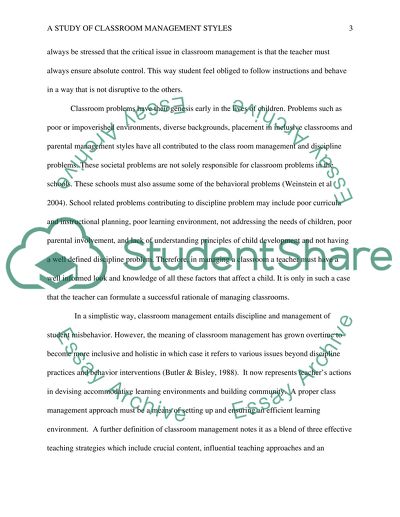Cite this document
(“Classroom Management Styles Essay Example | Topics and Well Written Essays - 1750 words”, n.d.)
Retrieved from https://studentshare.org/education/1624102-indepandent-study-a-study-of-classroom-management-styles
Retrieved from https://studentshare.org/education/1624102-indepandent-study-a-study-of-classroom-management-styles
(Classroom Management Styles Essay Example | Topics and Well Written Essays - 1750 Words)
https://studentshare.org/education/1624102-indepandent-study-a-study-of-classroom-management-styles.
https://studentshare.org/education/1624102-indepandent-study-a-study-of-classroom-management-styles.
“Classroom Management Styles Essay Example | Topics and Well Written Essays - 1750 Words”, n.d. https://studentshare.org/education/1624102-indepandent-study-a-study-of-classroom-management-styles.


